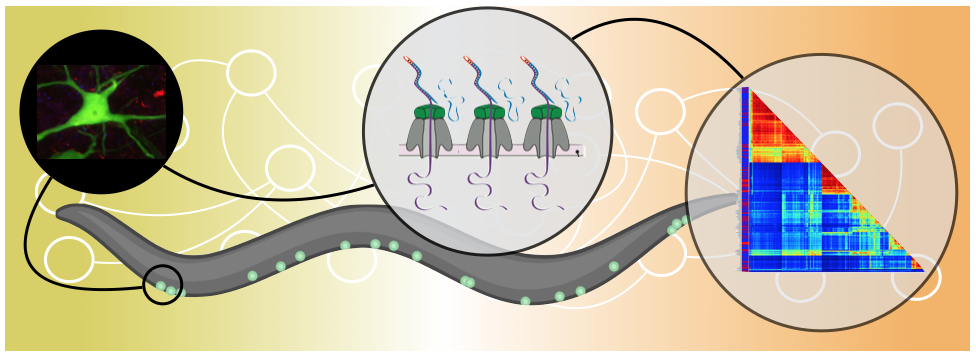Neuron-specific splicing regulation analysis through full-length transcriptomic approaches


My team uses a combination of transcriptomics, genetics and bioinformatics approaches to analyse the molecular bases of cell differentiation in C. elegans, with a special emphasis on post-transcriptional regulation by alternative splicing.
Learn more on our team's website here.
Contact Denis DUPUY at denis.dupuy@inserm.fr
NERVSPAN project
Cell differentiation is the product of tightly regulated gene expression programs. The nematode C. elegans, being the only multicellular organism with a fully characterized cell lineage , is the ideal model to study the molecular principles that define cellular identity. Recent work from the C. elegans Neuronal Gene Expression Map & Network (CeNGEN) Project demonstrated the feasibility of systematically characterizing the mRNA content of individual neurons in C. elegans. While the scRNA-seq data is a tremendous resource to understand transcriptional regulatory networks, the authors noted that the identification of alternatively spliced isoforms could only be achieved through bulk sequencing of isolated neuron types.
Objectives
In this project you will :- Develop strategies for producing single cell cDNA libraries compatible with long read direct cDNA sequencing (Nanopore);
- Explore the molecular plasticity of the light touch response neurons and motorneurons through the comprehensive characterization of their splicing landscape at different developmental stages.
This will provide the foundation for the identification of splicing factor regulatory networks using genetic and biochemical approaches. Co-occurrence of splicing factors and specific mRNA isoforms will provide testable hypotheses regarding their putative targets and preferred RNA binding sites.